Cradle Mountain National Park was apparently used for the filming of the documentary When Dinosaurs Roamed America. This only misrepresents the park in two ways, but both are fairly fundamental – firstly it is Tasmania and not America and secondly there are no dinosaurs. However, it is easy to see why they wanted to use it – it is pristine untouched wilderness and absolutely beautiful. We were accessing it from the north, but the full name of the park is the Cradle Mountain – Lake St. Clair National Park. Access to Lake St. Clair and the south is from Derwent Bridge. The overland track goes right through the park, more or less north to south starting at Cradle Mountain and finishing at Lake St. Clair. This track is either 40 or 51 miles long (if you also walk around Lake St. Clair) with huts to stay in on the way and some say it is one of the best treks in the world. We weren’t about to check that as we only had a day.
From the National Park information centre you have to take a shuttle bus down into the park and we opted to take it right down to the last stop – Doves Lake. The walk around Doves Lake is 6km and takes you round under Cradle Mountain and so has lovely views. We started walking clockwise as instructed and the nature of the path was such that the vistas kept changing all the time. The eastern side of the lake was often through forest with some lovely lichens and mosses, so much so that Anne started a lichen hunt for the various different species. I had no idea what they were and took the photos as instructed, but I do know that I have rarely seen such extensive and healthy lichens – a good indicator of the purity of the air.
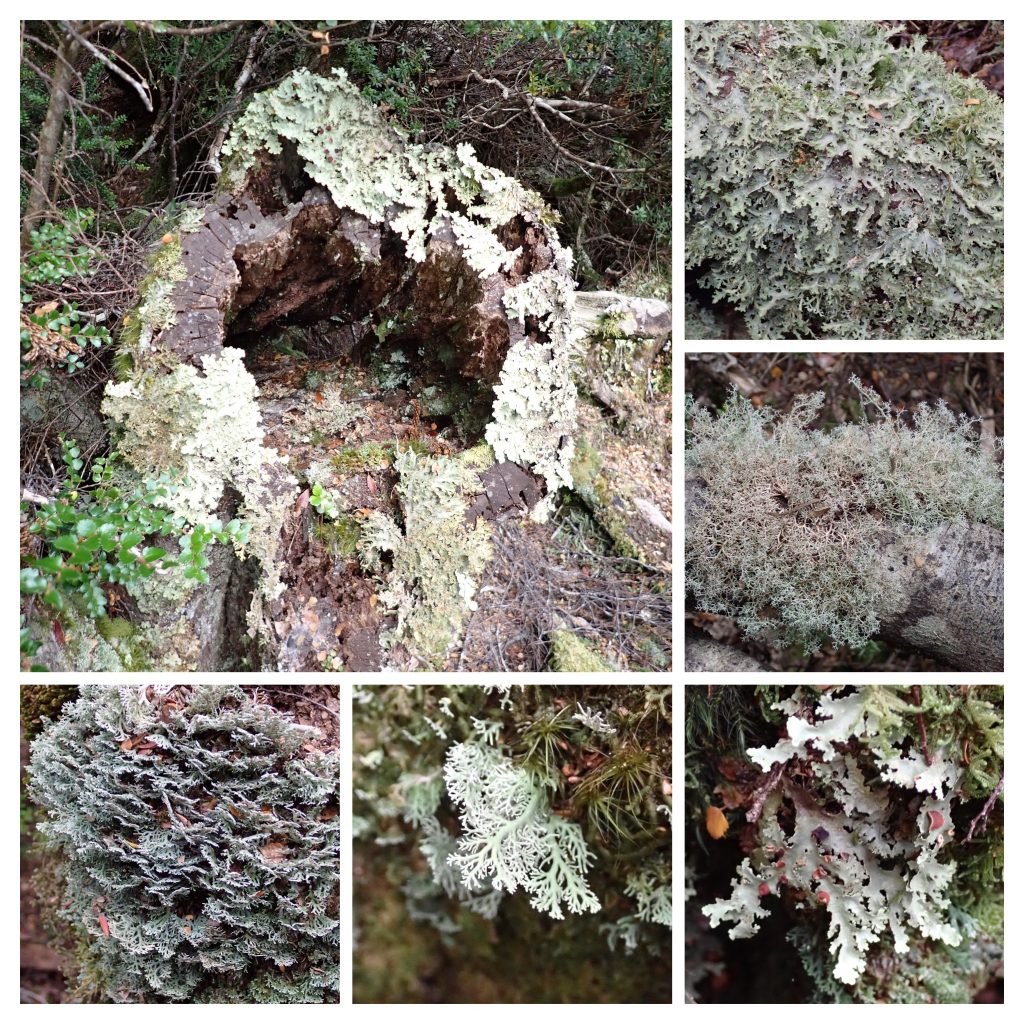
In total the walk took around two hours with some trickier sections (in the sense that they went up and down a lot, something we are not used to in Essex!) on the western side of the lake, but all completely worth it – amazing views. Once we got back to the Doves Lake centre we picked up the bus again. The bus driver was one of the park rangers and clearly very knowledgeable. He stopped to show us a Tiger snake sunning itself – this was fine with glass between me and the snake and he also pointed out a wombat on the hill by Ronny’s Creek. We decided to get off at Snakes Hill to walk down the boardwalk back down to Ronny’s Creek – again a lovely walk and we had lunch at Ronny’s Creek.
We then went on a wombat hunt. We saw the one we had seen from the bus a little more closely, but still probably around a fifty metres or so away, so after watching that for a bit we carried on walking and obligingly, a second one was feeding. This one was a little closer and we could clearly see it, even it if was still forty metres or so away.
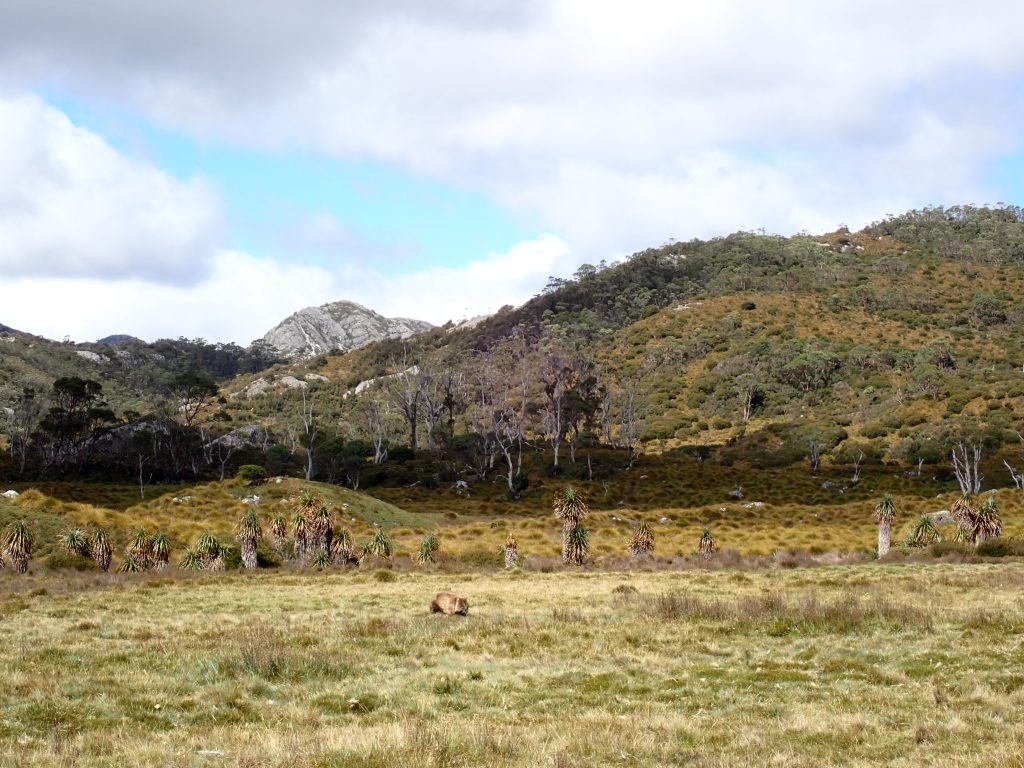
Cradle Mountain was declared a national park in 1947 and this was mainly through the vision of Austrian-born Gustav Weindorfer. At the top of Cradle Mountain he declared that
This must be a national park for the people for all time. It is magnificent, and people must know about it and enjoy it.
Gustav Weindorfer 1910
He determined to build a chalet and a road to get people to come and we walked round to that original chalet which is called Waldheim. By this time, the day was getting on and so we took the bus back to the information centre and retired to our accommodation for a while.
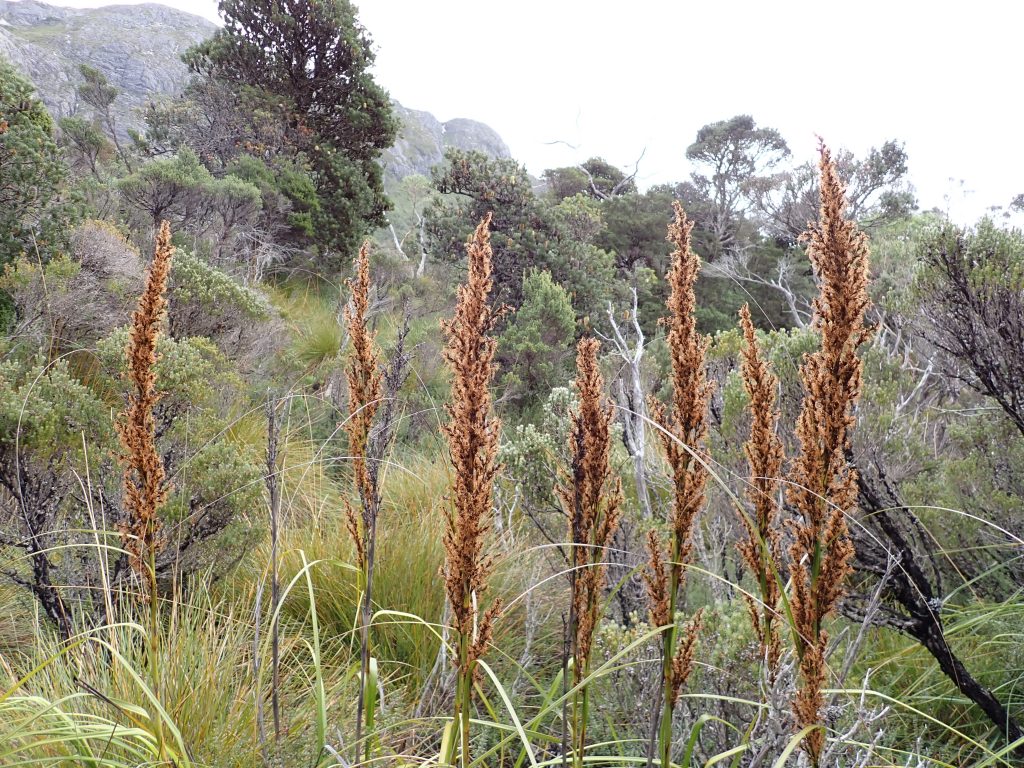
After supper at the resort we had booked a night spotting tour. So much of Tasmania’s wildlife is nocturnal that we decided this might be the best way to see things. We were picked up just before 8.30pm and headed back down to Ronny’s Creek where we had walked earlier in the day. However, even on the drive down we spotted brushtail possums, pademelons and a couple of wombats beside the road. Once walking it was wombat city …. When eating they are quite territorial and there was a sudden noise as one wombat chased another down the hill to clear it away. They were not the slightest bothered by us at all. One even wandered along the boardwalk amongst us having a sniff of our shoes before getting bored and heading back off to the grass.
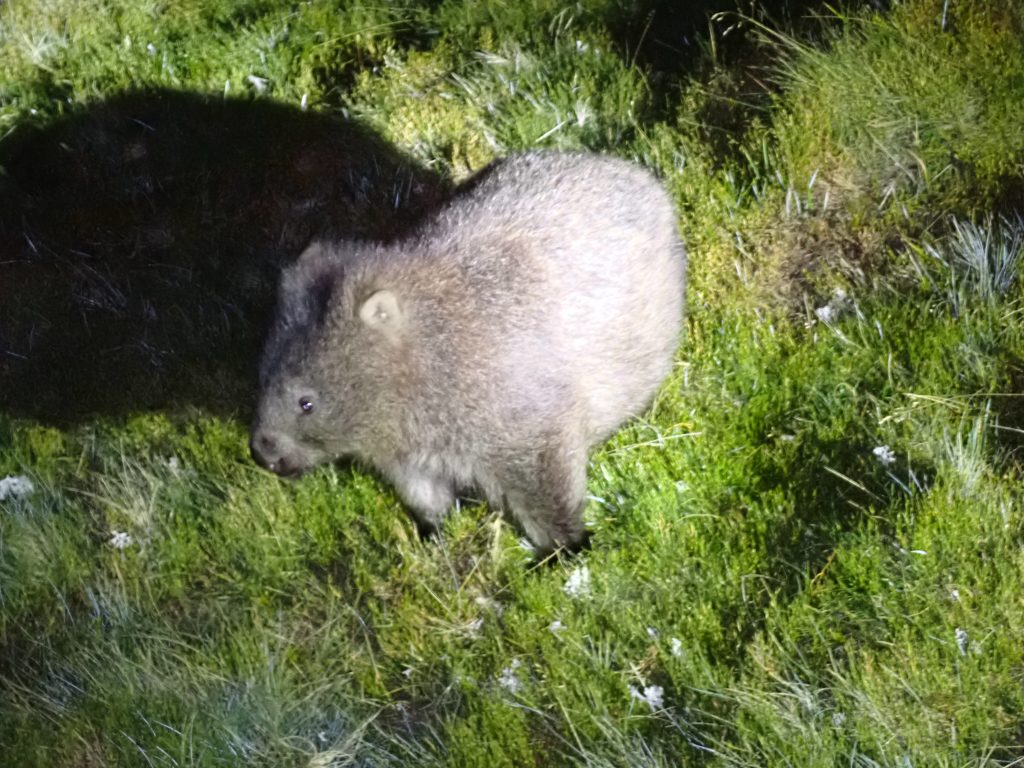
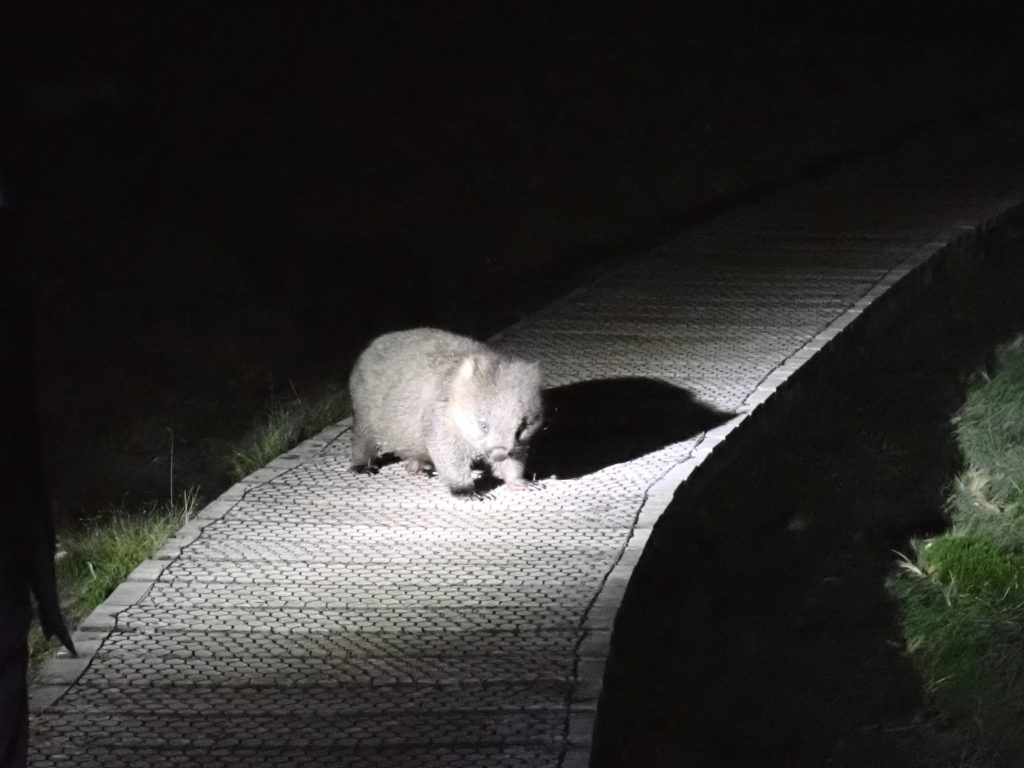
As we were just about to turn round, the guide suddenly spotted an eastern quoll. These are quite shy and we were lucky to see one – it was certainly quite skittish, but we managed to catch it in the torchlight a few times before it ran off completely. There are two types of quoll – the eastern one we saw which has white spots all over except the tail and the spotted-tail quoll which has spots all over including the tail.
She drove back very slowly as the wildlife was even more extensive; pademelons, Bennet’s wallabies (a whole family including a joey in one case), brush-tailed possums and several more wombats. A great evening – seeing the animals in their natural environment is an excellent way to understand the challenges they face and that accompanied by an expert commentary was ideal ….
